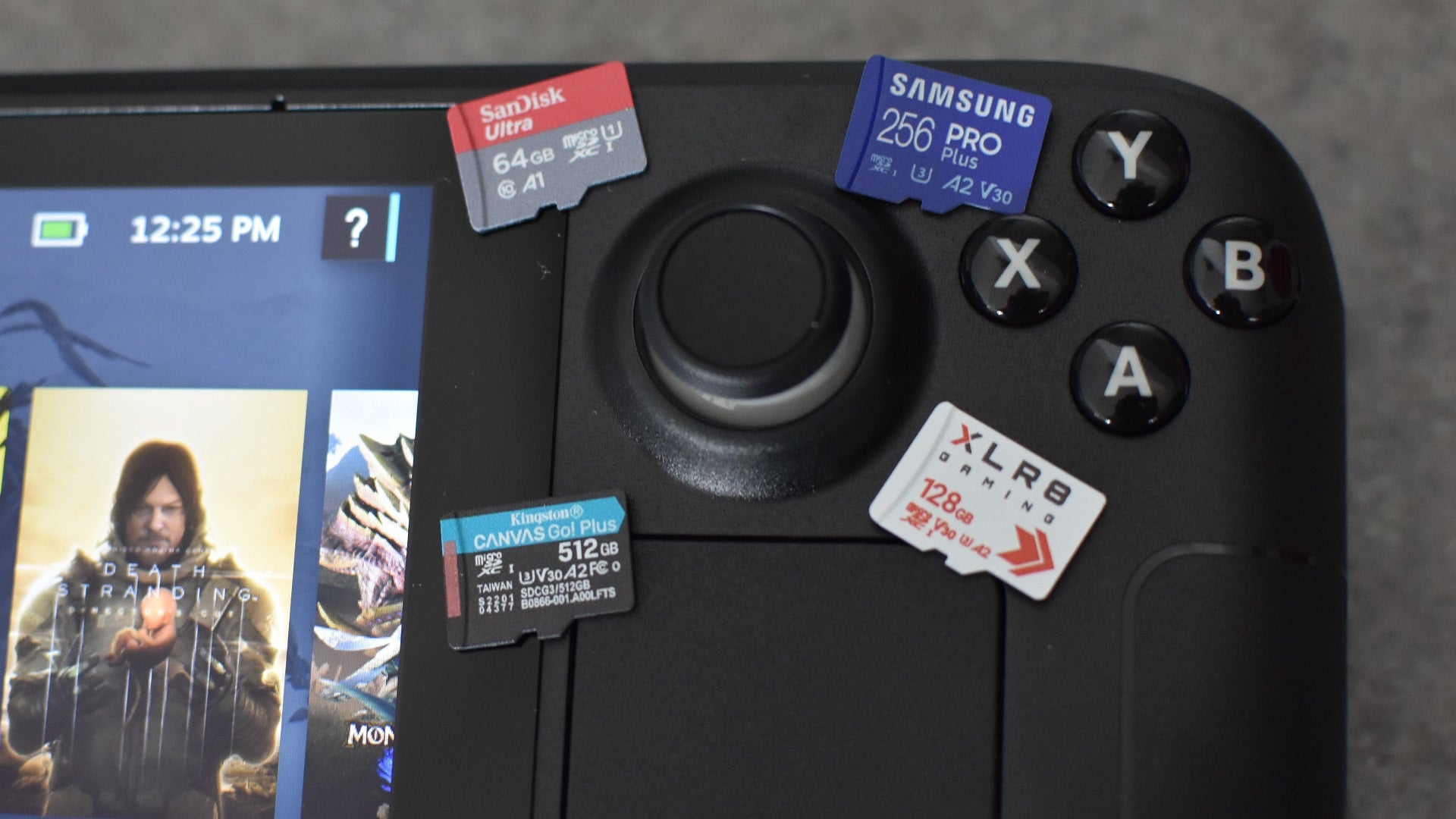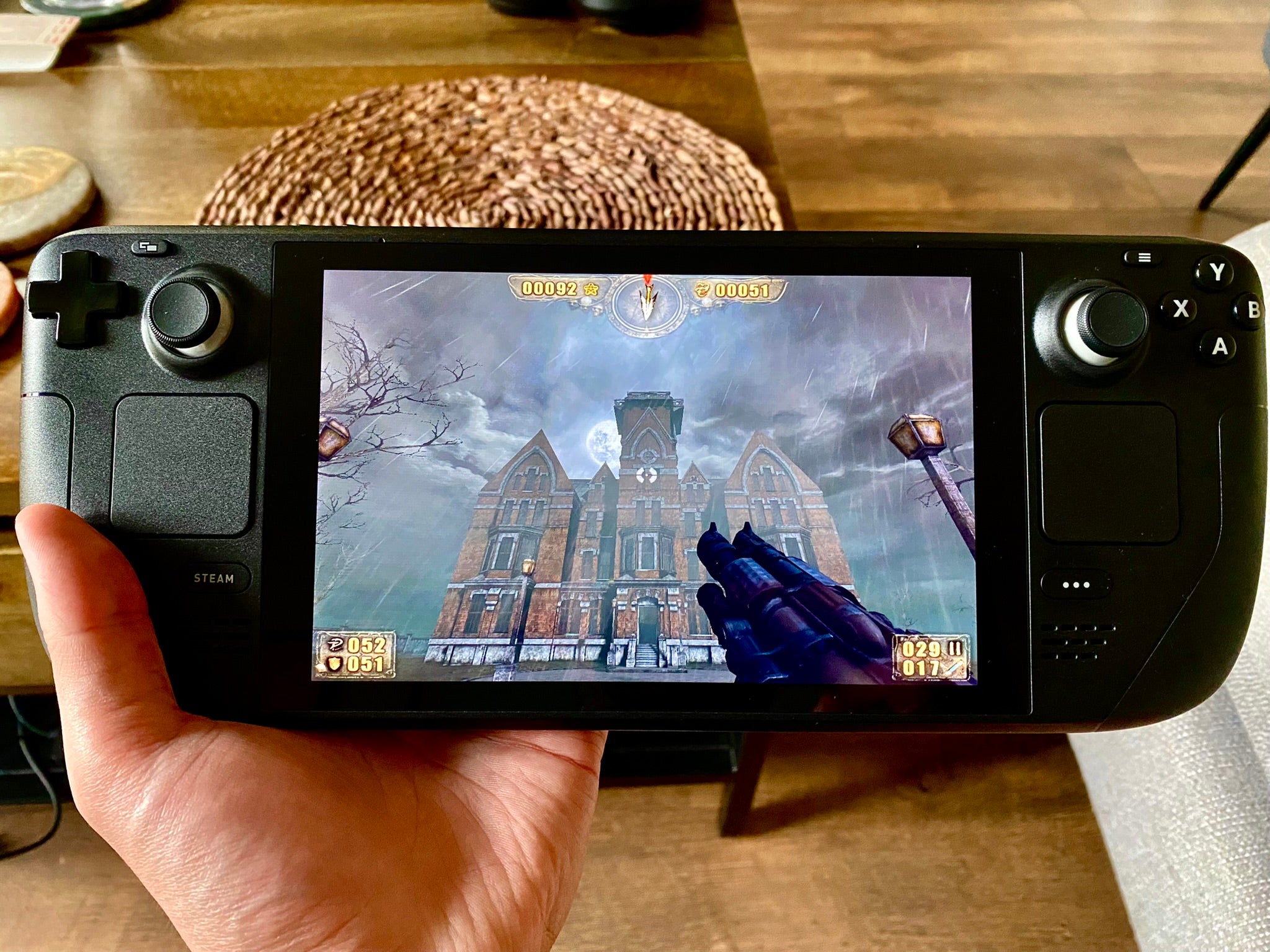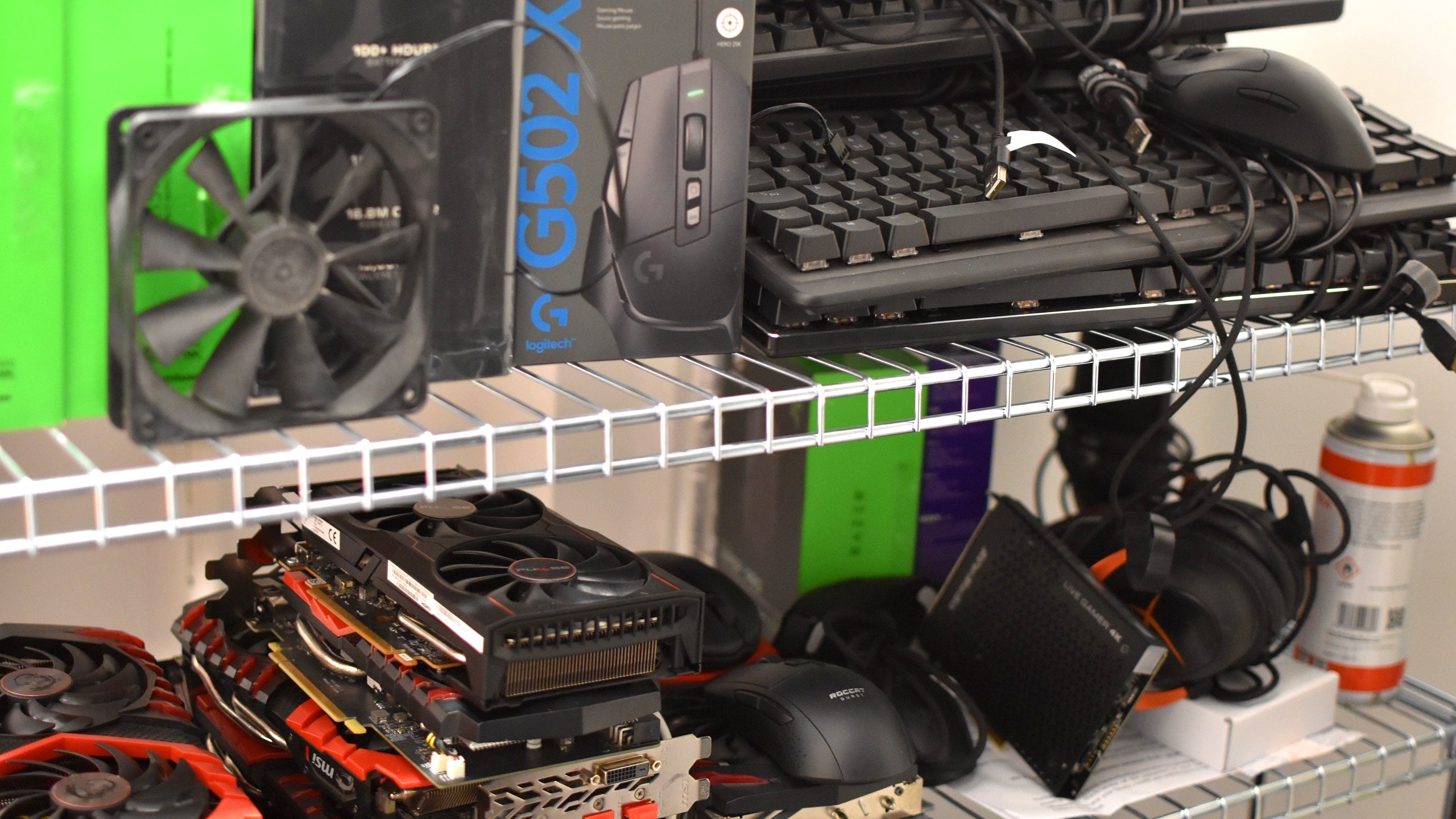The best microSD cards for the Steam Deck
Expand your Steam Deck’s storage with these tried-and-tested cardsThe best microSD cards for the Steam Deck are the most important accessories you can pair up with Valve’s go-anywhere PC. Partly because each handheld already comes with a case, perhaps, but also because even if you treat yourself to the most capacious 512GB Steam Deck, storage space can fill up quickly – and the usual best SSDs for gaming PCs won’t fit inside the dinky Deck. A good microSD card, however, is easy to slot in, and thus expand the room for all those 100GB-plus games that keep being made.
Why not swap out the internal SSD itself? That would indeed be the more PC-ish thing to do. But the M.2 2230 SSDs that fit the Steam Deck are neither easy to find nor much cheaper than equivalently sized microSDs, and if you mod the handheld to accept larger SSD form factors, a Valve employee might come and tell you off. Honestly, I do think microSD cards are the way to go, and the models I’ve tested and chosen for this list aren’t even much slower than Valve’s stock 512GB SSD. And one, the SanDisk Extreme Pro, is even slightly faster.
The only spec requirement you need to worry about is that microSD cards must meet the UHS-I speed standard to work in the Steam Deck. That’s a very common certification, mind, and all the cards in the list below are good for it. For testing, I installed Aperture Desk Job and Shadow of the Tomb Raider on each card and timed how long – on a three-run average – each game took to launch to its main menu and to load from the menu into the game proper.
All these speed test results can be found below, included with my picks of the current best Steam Deck microSD cards. Do consider grabbing of these up if you’re one of the rapidly growing number of Deck owners, and hey, if your card fills up as well, you can always use the Steam Deck as an Xbox Cloud Gaming machine.
The best microSD cards for the Steam Deck
- Samsung Pro Plus - The best microSD card for the Steam Deck overall
- SanDisk Extreme Pro - The fastest microSD card for the Steam Deck
- SanDisk Ultra - The best cheap microSD card for the Steam Deck
- Kingston Canvas Go! Plus - Good speeds with a wide range of capacities
- PNY XLR8 microSDXC Gaming – Low prices, but US-only for now
Samsung Pro Plus
The best microSD card for the Steam Deck overall
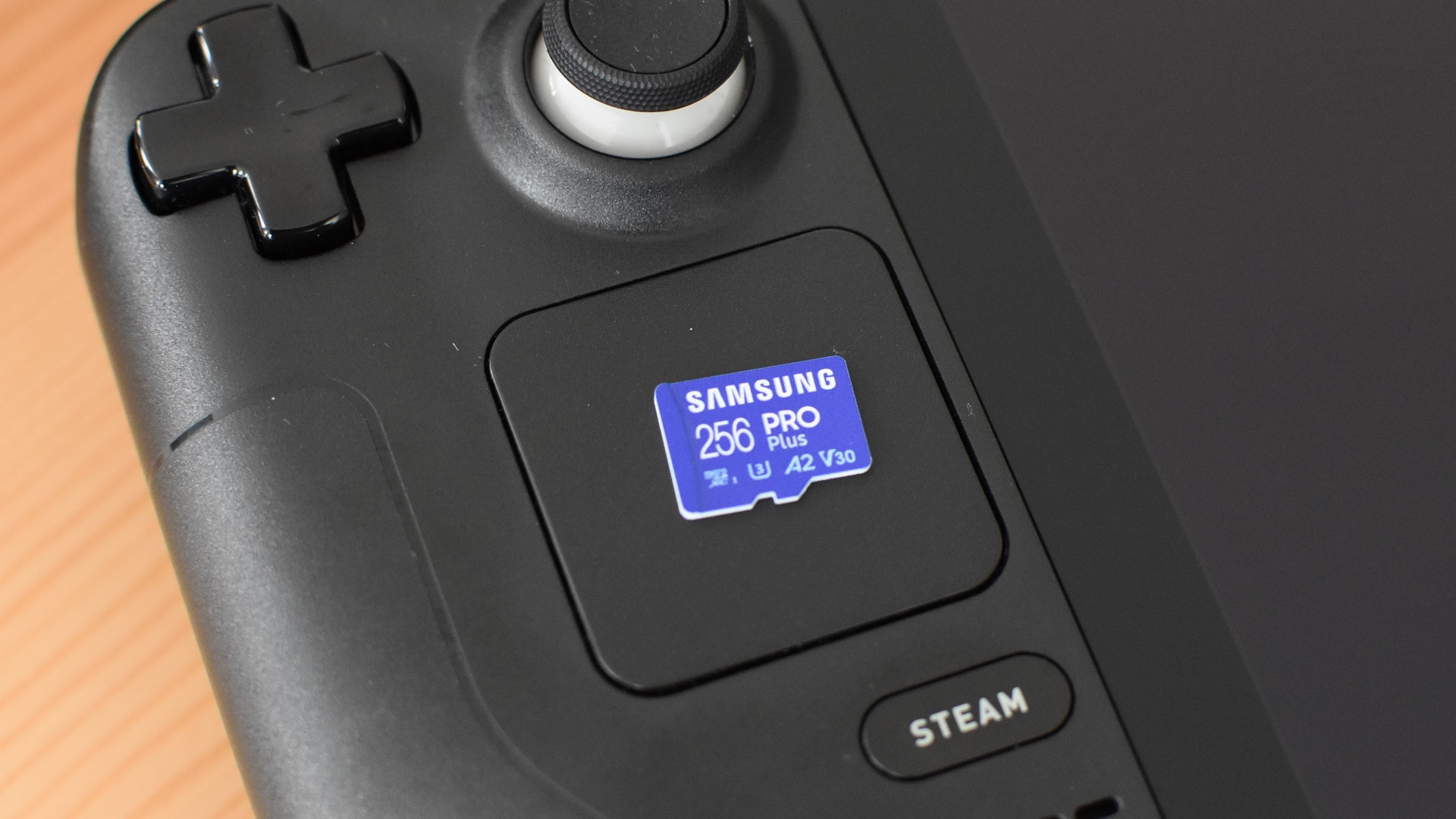
Samsung have crafted some of the finest PC SSDs (the 870 Evo, the 870 Qvo, the 980 Pro and so on), so it’s not terribly surprising they know their way around a Steam Deck-ready microSD card as well. The Samsung Pro Plus was the first card I tested to get under 11s in the Aperture Desk Job launch test, as well as the first to hit 16s dead in the Shadow of the Tomb Raider loading test. The SanDisk Extreme Pro has since posted even faster load times, but Samsung's microSD has a generally better balance of price and performance.
That's not the same as it being cheap per se, especially compared to the SanDisk Ultra, but generally it’s only a few quids’ / bucks’ difference. And the 512GB model, the most spacious available, is actually a quite a lot more affordable than the similarly-specced Kingston Canvas Go! Plus.
- Aperture Desk Job average launch time: 10.9s
- Aperture Desk Job average load time: 3.4s
- Shadow of the Tomb Raider average launch time: 14.6s
- Shadow of the Tomb Raider load time: 16s
- Aperture Desk Job average launch time: 10.3s
- Aperture Desk Job average load time: 3.3s
- Shadow of the Tomb Raider average launch time: 14.3s
- Shadow of the Tomb Raider load time: 15.6s
- Aperture Desk Job average launch time: 11.1s
- Aperture Desk Job average load time: 3.4s
- Shadow of the Tomb Raider average launch time: 14.8s
- Shadow of the Tomb Raider load time: 16.3s
- Aperture Desk Job average launch time: 11.3s
- Aperture Desk Job average load time: 3.5s
- Shadow of the Tomb Raider average launch time: 14.8s
- Shadow of the Tomb Raider load time: 16.3s
- Aperture Desk Job average launch time: 11.2s
- Aperture Desk Job average load time: 3.5s
- Shadow of the Tomb Raider average launch time: 14.8s
- Shadow of the Tomb Raider load time: 16.1s
SanDisk Extreme Pro
The fastest microSD card for the Steam Deck
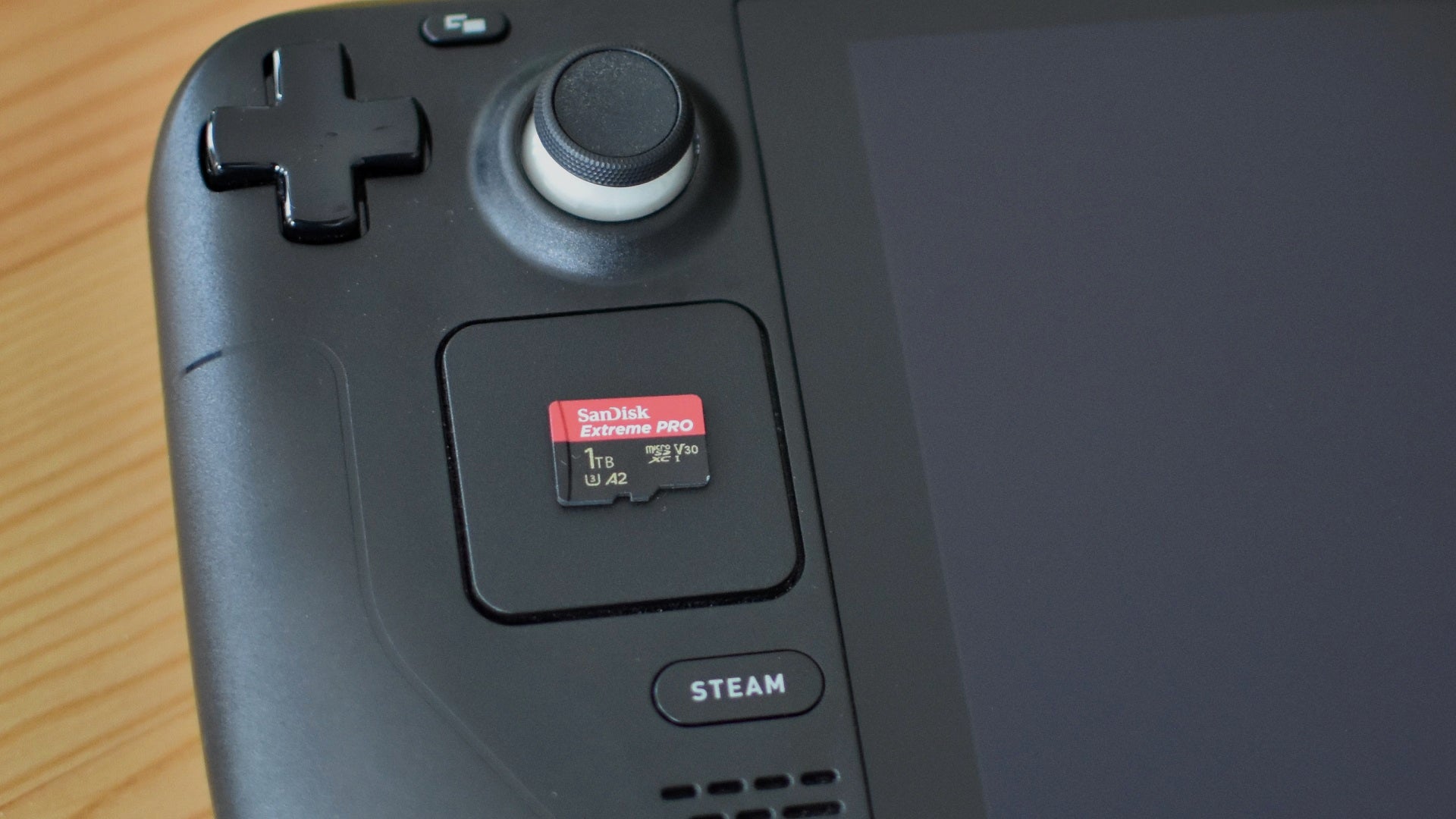
Even if it’s just by fractions of a second, the SanDisk Extreme Pro has the honour of being the only microSD card here to consistently outspeed the 512GB Steam Deck’s SSD: its 15.6s time in the Shadow of the Tomb Raider game loading test just noses past the SSD’s 15.9s. Should you mainly care about shaving off every possible half-second from your game loading times on the Steam Deck, then the Extreme Pro is the card to go for.
The only reason it’s not at the very top of this list is that the Samsung Pro Plus, which is also quick off the mark, tends to be more attractively priced. In the US, especially so. That said, some of the Extreme Pro’s capacities – like the 512GB version – are more on par with the Pro Plus in the UK, in which case it’s an excellent alternative. SanDisk’s microSD card also has a wider range of size options than most, including a generous (if very pricey) 1TB model.
SanDisk Ultra
The best cheap microSD card for the Steam Deck
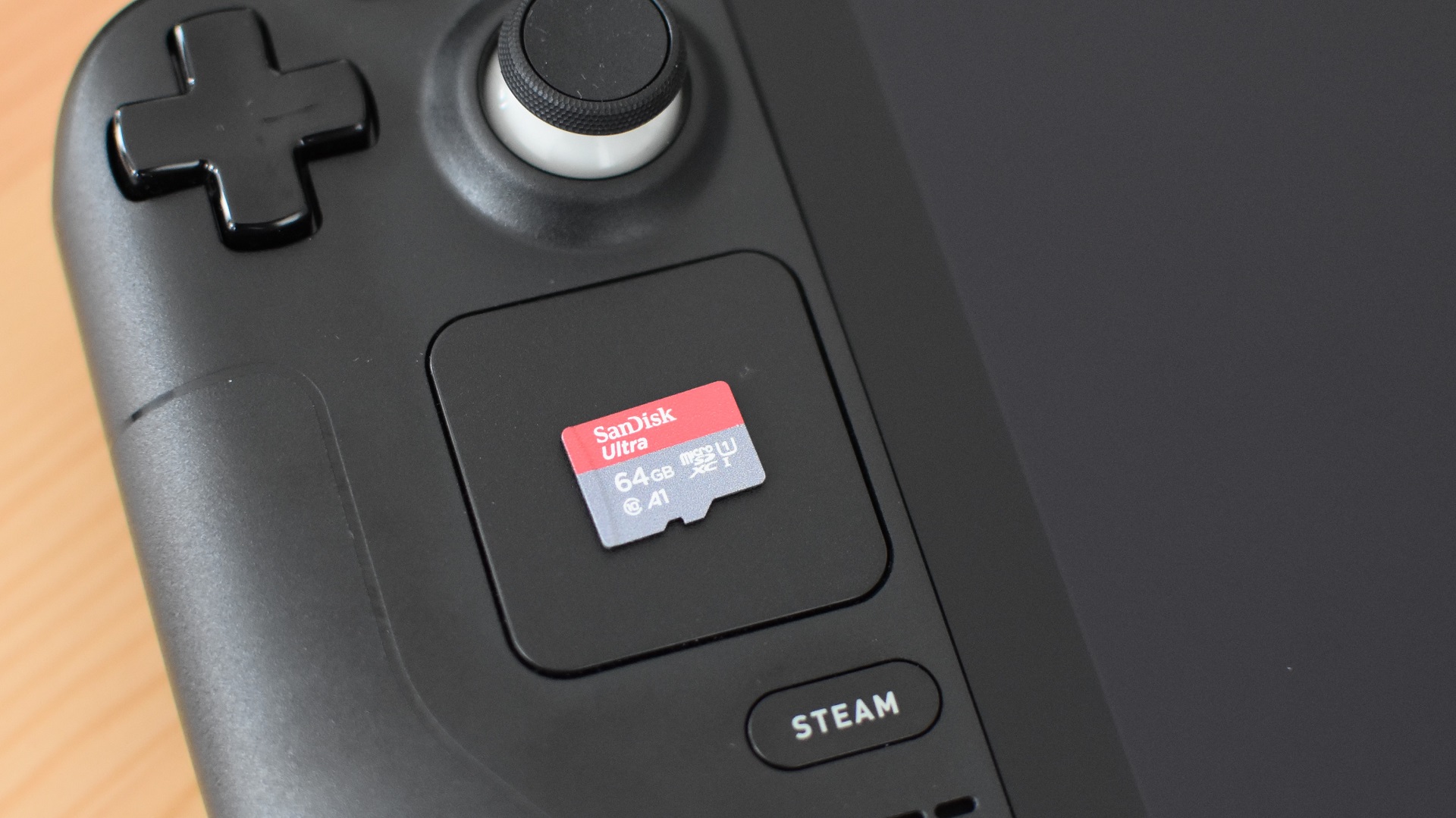
The SanDisk Ultra offers a wider range of capacities than the Pro Plus, with lower prices across the board. This is partly owing to its lower U1 speed class, meaning its write speeds aren’t as fast as U3 models, but that’s more of a concern for videographers needing a microSD card for their camera. Where games performance is concerned, read speed is king, and the affordable Ultra can keep pace with pricier cards.
It put up an especially spry challenge in Aperture Desk Job, and even its ‘worst’ performance – the Shadow of the Tomb Raider load test – was less than half a second slower than the Deck’s top-spec SSD. That said, I’d recommend going for a bigger capacity than the 64GB card I used for testing; the 256GB and 512GB models are both particularly good deals at their current prices, and the 1TB version is a bargain compared to the 1TB SanDisk Extreme Pro.
Kingston Canvas Go! Plus
Good speeds with a wide range of capacities
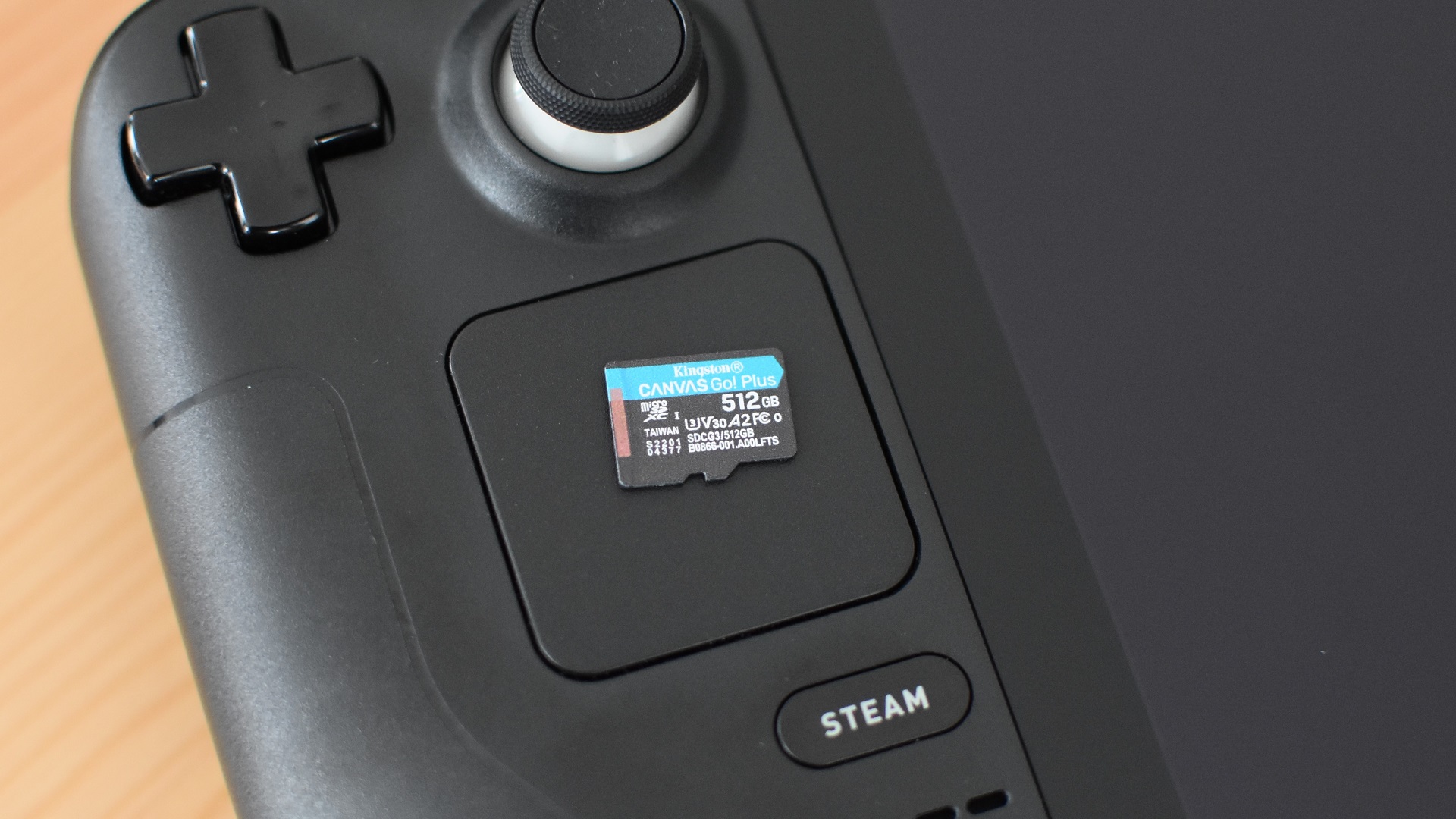
According to its marketing prose, the Kingston Canvas Go! Plus is for “adventurers”. Is playing God of War on the 11:55 Paddington to Swindon service an adventure? Either way, this microSD card proves it can suit the Steam Deck just as well as a GoPro, with a particularly zippy average time in the Shadow of the Tomb Raider launch test.
Outside of lacking a 1TB option, there’s also a wider selection of capacities than with the Samsung Pro Plus, or the PNY XLR8 below. The Canvas Go Exclamation Mark Plus’ 512GB model is currently more expensive than its peers, and the 256GB model no longer provides big savings over the Pro Plus, but they're all still decently priced for the performance.
PNY XLR8 microSDXC Gaming
Low prices, but tricky to find in the UK

A rare games-focused card, the PNY XLR8 microSDXC Gaming put up respectable times in all four speed tests without any cheeky price premiums. In fact, for sheer affordability, the XLR8 is often breathing down the neck of the equivalent SanDisk Ultra capacities. And that’s while offering class U3 write speeds, which might be helpful if you’re planning to use the Steam Deck as a desktop PC even if they’re not as useful to gaming specifically.
The UK availability situation could be better - right now I can only find the 256GB and 512GB models in stock. I was told months ago that the 128GB version is on th way as well, though it's still a no-show this side of the Atlantic. Ah well - US Steam Deckists at least have the full choice for the time being, and it's not like there aren't faster or cheaper alternatives from Samsung and SanDisk.
What microSD cards are compatible with the Steam Deck?
The Steam Deck’s microSD requirements aren’t very demanding: any UHS-I microSD should work, including microSDXC (Expanded Capacity) and microSDHC (High Capacity) cards. You’re best off looking at SDXC cards, though, like the ones listed above: standard microSD cards are limited to a piddly 2GB, while microSDHC cards max out at 32GB. Since only microSDXC cards can therefore occupy the 64GB-2TB range, they’re the ones to focus on to make sure you’re adding sufficient space.
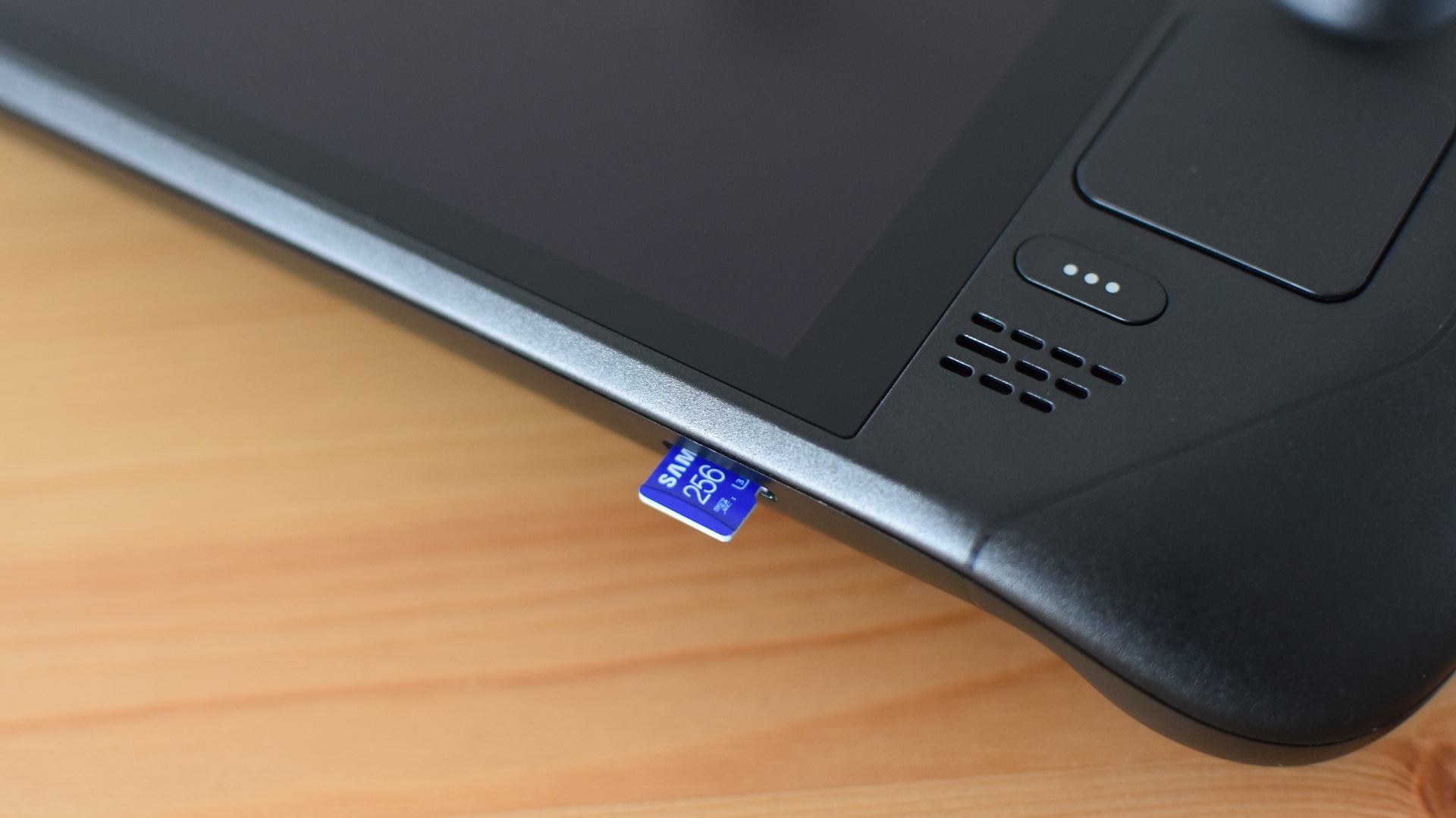
Once you’ve got a compatible microSD card, it’s just a case of pushing it into the slot on the bottom edge of the Steam Deck until it clicks into place, then going into the SteamOS System settings to format it. From there, you can set it as the default game installation location in the Storage settings. To remove the microSD card, push it even further into the slot until the lock releases, sending it popping partway out.
What do the interfaces and speed classes mean?
UHS (Ultra High Speed) is the current interface standard for SD and microSD cards, with specific ratings like UHS-I, UHS-II, and UHS-III denoting maximum transfer speeds. UHS-I cards have a max speed of 104MB/s, while UHS-II and UHS-III can reach 312MB/s and 624MB/s respectively.
On the Steam Deck, Valve opted for the UHS-I interface. UHS-II and UHS-III cards are backwards compatible with UHS-I, so you could use them in the Deck, but you’d be limited to UHS-I speeds; as such, theres’s little point in spending more to get the newer interfaces. Besides, game launching and loading times depend on non-sequential read speeds, which normally don’t come close to the advertised maximum sequential speeds anyway.
Another spec you might see printed on microSD cards is the speed class, like U1 or U3. Rather than general maximum speeds, these represent minimum sequential write speeds: U1 is 10MB/s, U3 is 30MB/s. Again, these ratings don’t have any real bearing on how fast your Steam Deck games will load, though it might be worth plumping for a U3 card if you’re using your Deck as a full-on desktop replacement, where faster write speeds will come in handy more often.
For more on making the most of your Steam Deck, have a read of our Steam Deck battery life guide. And if you need some inspiration on how to fill up that new microSD card of yours, check out the 30 best Steam Games.

